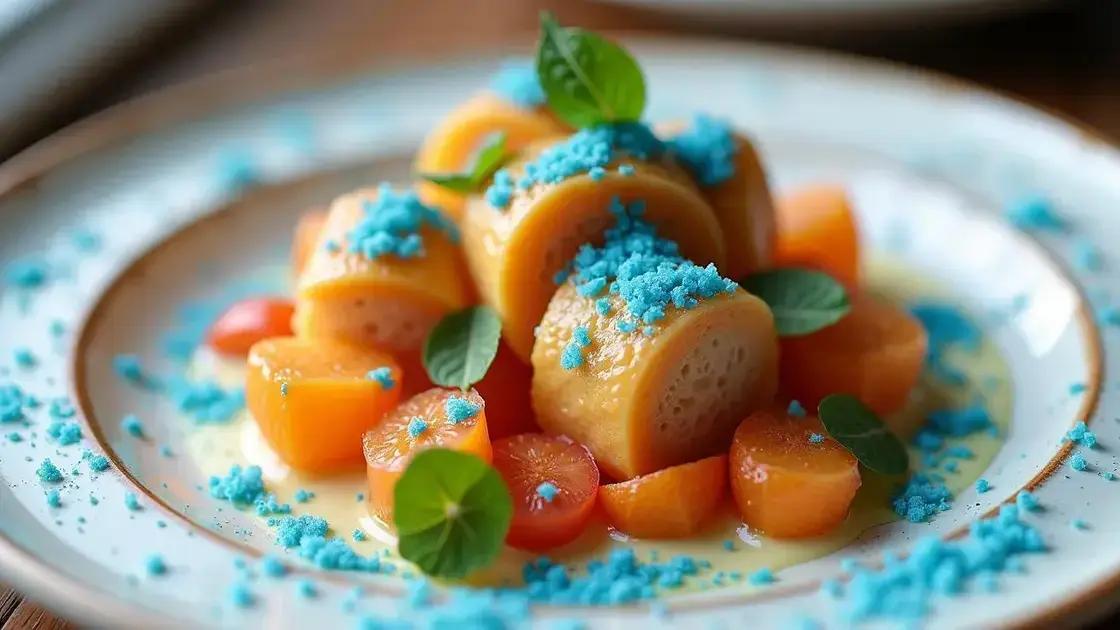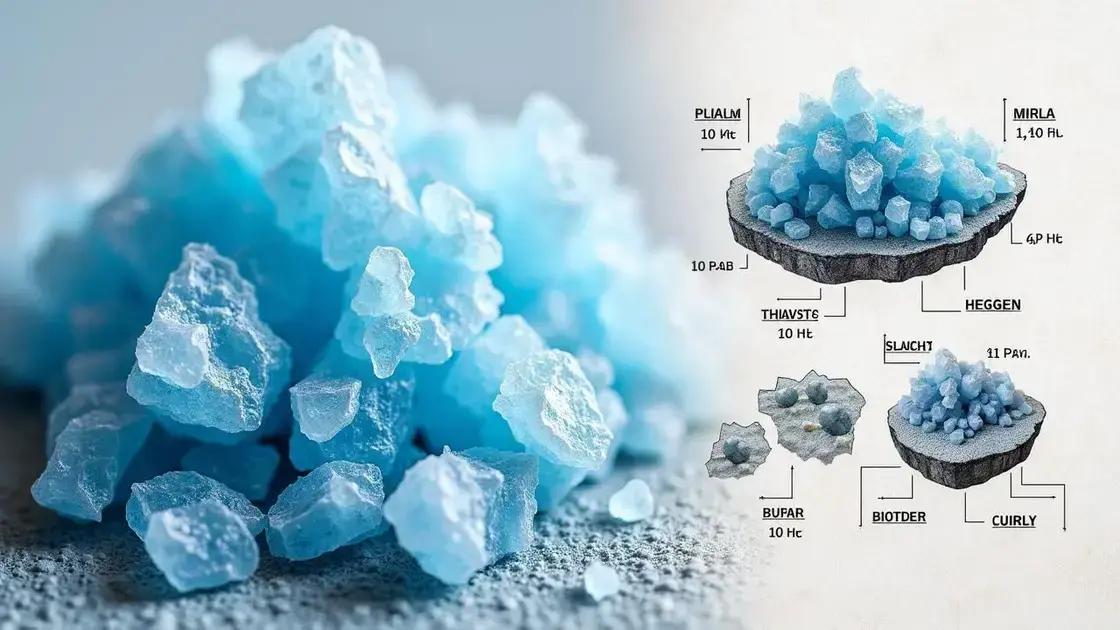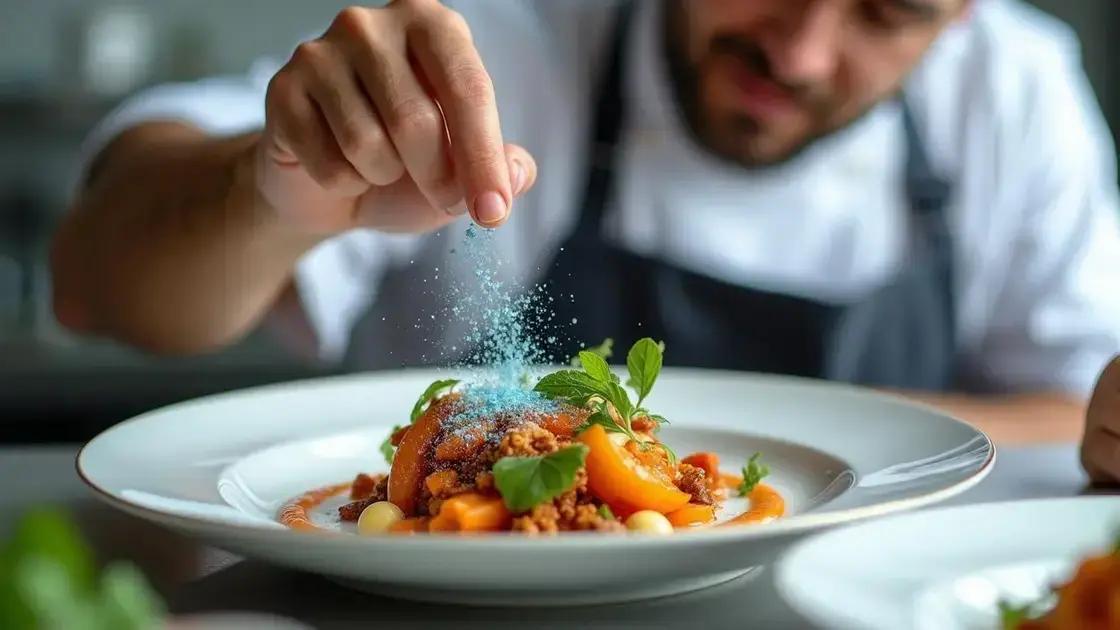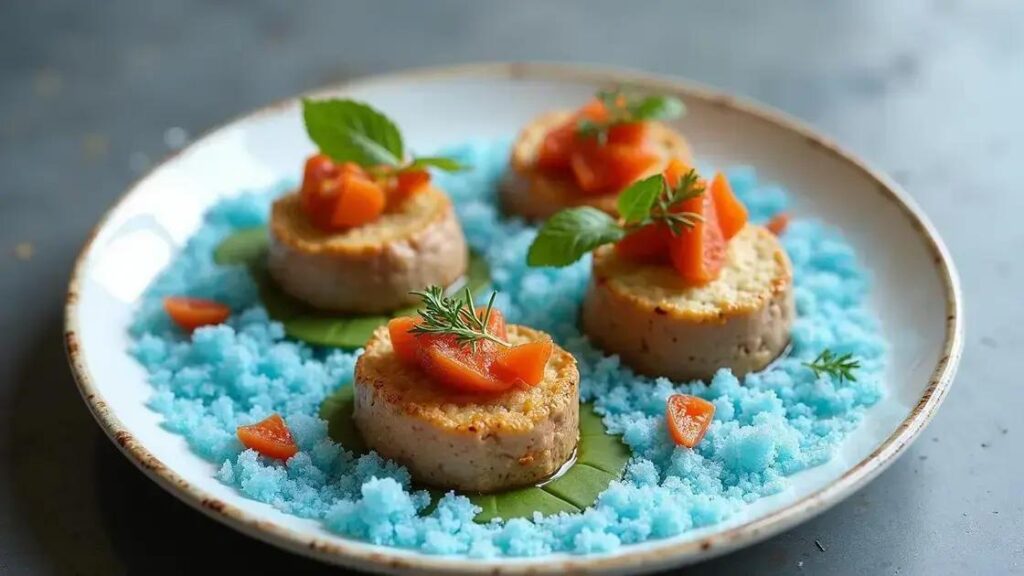The Blue Salt Trick is a unique culinary technique that involves using blue salt as a finishing touch to enhance flavors and presentation in dishes, offering a distinct taste due to its mineral content and adding visual appeal to various meals, from salads to desserts.
The Blue Salt Trick is a captivating culinary technique that has intrigued chefs and food enthusiasts alike. What makes the Blue Salt Trick unique? This innovative method not only enhances flavors but also adds a striking visual appeal to dishes. In this article, we will delve into the science behind blue salt, explore its culinary applications, and share tips on how to incorporate this unique trick into your cooking.
Understanding the Blue Salt Trick

The Blue Salt Trick is an intriguing culinary technique that elevates the presentation and flavor of various dishes. This trick utilizes a special type of salt that enhances the colors and tastes in food. Its usage can transform ordinary meals into extraordinary culinary experiences.
What is Blue Salt?
Blue salt, often derived from specific mineral deposits, is known for its striking color and flavor profile. It is primarily mined in certain regions, such as Persia, and contains unique trace minerals that contribute to its distinctive hue and taste. This type of salt is not just for aesthetic appeal; its complex flavors can add depth to a variety of dishes.
How Blue Salt Works in Cooking
The magic of the Blue Salt Trick lies in its ability to enhance flavors when used correctly. Blue salt can be employed as a finishing salt, meaning it’s added to dishes just before serving. This application allows the full flavor of the salt to come through without overwhelming the dish. The visual contrast of blue salt against vibrant foods provides an enticing presentation that catches the eye and sparks curiosity.
Historical Context of Blue Salt
The unique properties of blue salt have been appreciated since ancient times. Used in various cultures, it has a rich history of being incorporated into traditional recipes. From enhancing the taste of meats to complementing fresh vegetables, the versatile uses of blue salt are vast. Understanding this history helps us appreciate the significance of the Blue Salt Trick in modern culinary practices.
Modern Popularity and Culinary Uses
In recent years, the Blue Salt Trick has gained popularity among chefs and home cooks alike. Its use is seen not only in gourmet restaurants but also in home kitchens. People have begun experimenting with blue salt in salads, seafood dishes, and even desserts. This growing interest reflects a broader trend of incorporating visually striking elements into cooking.
The Science Behind Blue Salt

The science behind blue salt is fascinating, as it involves the specific minerals and natural processes that create its unique color and flavor. Blue salt is typically formed in arid environments, where evaporation leads to the concentration of salt in mineral-rich areas.
Unique Minerals
What sets blue salt apart from regular table salt is its high content of minerals, such as potassium and magnesium. These minerals impart not only a distinctive taste but also contribute to the color. The hue varies from deep blue to purple, making it visually striking.
Formation Process
The formation of blue salt begins with the natural crystallization of salt in mineral-rich waters. As water evaporates, the minerals are left behind. Over time, the salt crystallizes and gains a blue or purplish tint. This natural process can take years, which is why blue salt is considered rare and special.
Flavor Profile
The flavor of blue salt is often described as complex compared to regular salt. The additional minerals create a delicate balance of sweet and savory notes. When used in cooking, blue salt enhances the flavors of dishes without overpowering them, making it an excellent finishing salt.
Health Benefits
Some health enthusiasts praise blue salt for its potential benefits. The natural minerals present in blue salt are believed to support electrolytic balance in the body. Additionally, its visually appealing nature encourages chefs and home cooks to use a smaller quantity, which may help reduce overall sodium intake.
Culinary Applications of Blue Salt

The culinary applications of blue salt are both diverse and exciting. Chefs and home cooks alike are discovering how to use this unique salt to enhance their dishes and add a touch of visual appeal.
Finishing Salt for Dishes
Blue salt is often used as a finishing salt, which means it is added to dishes just before serving. This allows the unique flavor and color of the salt to stand out. For example, sprinkling blue salt on a perfectly cooked steak or fish can elevate the dish, creating a beautiful contrast and a burst of flavor.
Salads and Vegetables
Another popular use of blue salt is in salads and fresh vegetable dishes. The salt not only boosts the taste but also adds a vibrant splash of color. When used in salads, it can highlight the freshness of the ingredients, making them even more appealing to the eye.
In Baking
Blue salt can also be incorporated into baked goods. Using it in cookies or cakes can introduce an unexpected twist to the flavor. The salt can complement sweet flavors, enhancing the overall experience. A few flakes of blue salt on top of a cookie can also provide a stunning visual effect.
Pairing with Sweet Ingredients
Many chefs are experimenting with blue salt by pairing it with sweet ingredients. It can be used on chocolate desserts, caramel, or fruits like watermelon. This blending of sweet and salty makes for a delightful culinary experience that surprises the palate.
How to Try the Blue Salt Trick

If you’re ready to try the Blue Salt Trick, follow these simple steps to get started and experience its unique flavor and presentation.
Choosing the Right Blue Salt
First, select a high-quality blue salt. Look for salt that comes from reputable sources, like Persian blue salt. This ensures you get the best flavor and color. Check specialty stores or online shops for authentic options.
Preparing Your Dish
Next, prepare your dish as you normally would. Blue salt works well with various foods, including meats, vegetables, and desserts. Keep in mind that it should be used as a finishing salt, added just before serving.
Using Blue Salt
Once your dish is ready, sprinkle a small amount of blue salt on top. Remember, it’s more potent than regular salt, so start with a light touch and adjust according to your taste. The beautiful blue crystals will not only enhance the flavor but also add a stunning visual element to your plate.
Experiment and Be Creative
Feel free to experiment with different dishes and ingredients. Try using blue salt in salads, on grilled meats, or even in baked desserts. The sweet and salty combination can create exciting new flavors, so don’t hesitate to be creative!
Embracing the Blue Salt Trick
The Blue Salt Trick offers a unique way to enhance both flavor and presentation in your cooking. By understanding its origins and culinary applications, anyone can incorporate this special ingredient into their meals.
From its delightful mineral composition to the creative ways it can be used, blue salt serves as a beautiful and flavorful finishing touch.
As you experiment with the Blue Salt Trick, remember to be creative and enjoy the process of transforming your dishes into stunning culinary works of art. Don’t hesitate to share your experiences and discoveries with others, as they may be inspired to try this unique culinary technique themselves!
FAQ – Frequently Asked Questions about the Blue Salt Trick
What is blue salt and how is it different from regular salt?
Blue salt is a type of salt that is rich in minerals, giving it a unique blue or purple color and a more complex flavor compared to regular table salt.
How can I incorporate blue salt into my cooking?
You can use blue salt as a finishing salt by sprinkling it on dishes just before serving, enhancing both flavor and visual appeal.
Is blue salt good for health?
Blue salt contains minerals that can support hydration and electrolyte balance, but like any salt, it should be used in moderation.
Can I use blue salt in baking?
Yes, blue salt can be used in baking, but it’s best to use it as a finishing touch rather than an ingredient mixed into the batter.
Where can I buy blue salt?
You can find blue salt in specialty grocery stores, farmers’ markets, or online retailers that offer gourmet salts.
Does blue salt taste different from regular salt?
Yes, blue salt has a more complex flavor profile due to its mineral content, which can enhance the taste of your dishes.












